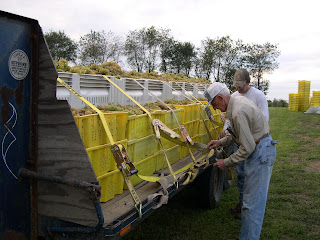I just returned from a 3 day trip to New York City volunteering for an organization called CommonGround, (www.findourcommonground.com) a group of farm women whose mission it is to tell folks about what we do (and don’t do) on our farms. Our goal is to connect the face of America
Here is a picture of our “corporation”:
Do you know that 98% of all the farms in the US
So back to my trip to New York City
The other episode that surprised me was when I was at our booth at the Editor’s Showcase, which is a tradeshow for editors. A woman approached our booth and said that she no longer ate meat since she watched a video of inhumane treatment of livestock. I responded by asking “You do know that does not represent the majority of family farmers and is not the “norm” for livestock farmers, right?” She said “No, really?” She honestly appeared to be utterly convinced by a single video that the bad apples in farming were representative of all farmers. I am not going to sit here and tell you that all farmers are doing the right thing, just like not all doctors, lawyers, police, or teachers are doing the right thing. But a few bad apples do not represent the entire profession. It was a message that repeated itself several times. Honestly, these were sincere, well-educated people who seemed to have been totally swayed into believing that what they saw on a video was the standard treatment of farm animals. How sad that folks are so disconnected from the farm that they will believe misinformation about an entire profession.
I feel fortunate to have been asked to attend this outreach effort on behalf of CommonGround. If what I said helped one person understand where their food comes from and the faces behind American farmers, then I will have accomplished a great deal.
Another interesting question that came up frequently – who funds you? CommonGround is funded by checkoff dollars from soybean and corn farmers. What this means is that when a farmer sells corn or soybeans, a portion of the sale price of each bushel goes into a fund that pays for research, marketing programs and promotion of those commodities. So American farmers are funding their own progress and programs. A really recognizable use of checkoff dollars is the “Got Milk” mustache campaign, which is a dairy funded checkoff program. It is the soybean and corn farmer checkoff dollars that support the programs of CommonGround, but the women in the organization are all volunteers. CommonGround is funded by farmers, it is our message that we are communicating, and no one else's message.
To find more information about your food and who grows it, I encourage you to visit CommonGround’s website www.findourcommonground.com and watch some of the videos made by other farm women who are also volunteering their time to educate folks about food and farming. It is a great resource to learn about your food.






